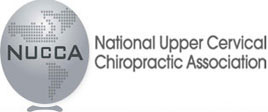Occupational health problems have become as complicated and varied as the change in the work environments of millions over the past century. One of the most commonly reported work-related causes of disability is Carpal Tunnel Syndrome (CTS).
This disorder currently affects an untold number of people and will likely afflict many more as our dependency on computers grows. The cause of Carpal Tunnel Syndrome is pressure on the median nerve. The median nerve originates as a branch off the spinal cord in the neck and serves a dual purpose; having a sensory function and also sending motor function signals that move your muscles.
The carpal tunnel is a narrow passageway about as big in diameter as your thumb located on the palm side of your wrist that is bounded by bones and ligaments.
It protects a main nerve to your hand and nine tendons that bend your fingers. Pressure placed on the nerve produces the numbness, pain and eventual hand weakness that characterize Carpal Tunnel Syndrome.
A careful diagnosis is required for CTS because there are three common places that may exert pressure on the median nerve:
- Wrist (the carpal tunnel)
- Elbow (to the outside of your bony knob)
- Neck (at the nerve roots that exit the spinal cord)
When you slightly compress a nerve in multiple locations the results don’t just compound, they often multiply. This is termed Double Crush Syndrome (DCS).
A small problem in the shoulder or neck can become a big problem at the wrist because of the effect on the nerves in our arms. This type of problem frequently exists when there is a neck misalignment, history of auto injury or other spinal disorders.
The nerves of the neck control all the nerves in our arms and hands. If the nerves of the neck are compressed, wrist and hand pain is a common result. Treating the wrong location is the leading cause of unsuccessful CTS treatment.
Numbness and tingling are abnormal sensations which may occur anywhere in our bodies, but are most frequently felt in our hands, feet, arms and legs. Alternative descriptions include Sensory loss or Parethesia (a loss of sensation). The most common causes of numbness and tingling are:
- Remaining in the same seated or standing position for a long time.
- Injury to a nerve (a neck injury might cause you to feel numbness anywhere along your arm or hand, while a low back injury can cause numbness or tingling down the back of your leg)
- Pressure on the spinal nerves such as that due to a herniated disk.
- Lack of blood supply to an area (plaque buildup from atherosclerosis in the legs can cause pain, numbness and tingling while walking, this is known as vascular claudication)
Other medical conditions, including:
- Diabetes
- Multiple Sclerosis
- Seizures
- Stroke
- Transient Ischemic Attack (TIA)
- Underactive thyroid
- Abnormal levels of calcium, potassium or sodium in your body
- A lack of vitamin B12 or other vitamin
- Certain medications
- Toxic action on nerves, such as that from lead, alcohol, or tobacco
- Radiation therapy
Medical Approach to Numbness & Carpal Tunnel
The standard medical treatments for Carpal Tunnel Syndrome are prescription medications, over-the-counter pain relievers and physical therapy. If those do not provide relief, surgery is a more aggressive and often used option. These options center on the wrist providing some improvement, but the real problem may be with one of the other possible locations of pressure on the median nerve. Surgical intervention can be avoided by treating the neck if physical therapy to the wrist is not effective for relieving symptoms.
The treatment of paresthesia is largely dependent on the actual cause. Restoring circulation to limbs that have ‘fallen asleep’ may be accomplished through stretching, other exercises and massage therapy. Anti-inflammatory drugs like aspirin or ibuprofen might be recommended if symptoms are mild and the paresthesia is caused by a chronic disease such as diabetes, or occurs as a complication of treatments like chemotherapy.
In more severe cases antidepressant drugs such as amitriptyline (Elavil) may be prescribed at a lower dose than what is usually required for the primary purpose of treating depression. These types of drugs are prescribed because they are thought to help alter the body’s perception of pain. Opium derivatives like codeine may also be prescribed. All these methods are aimed at relieving symptoms. Trials are currently underway to determine whether treatment with human nerve growth factor will be effective in regenerating damaged nerves.(1)
The NUCCA Approach to Numbness & Carpal Tunnel Syndrome CTS
The National Upper Cervical Chiropractic Association approach to treatment is always designed to resolve the underlying cause of the symptom and to allow the body to heal. Paresthesias or numbness can be caused by a number of stressors. Inflammation and a protruding disc are the best explanations for the problem of nerve pressure.
The NUCCA procedure balances the spinal column and skull to alleviate this stress and allow for the healing process to be optimized. By creating balance, this procedure reduces the asymmetrical load on the discs which initiates a natural reduction in inflammation. An upper cervical problem that is treated can offer relief to people who have suffered with numbness and tingling for weeks, months and even years.
A NUCCA chiropractor offers patients a corrective procedure that will restore balance to the skull, first cervical vertebrae, neck and the entire spine. Research shows that spinal corrections are a significant benefit for patients that suffer from the pain, numbness, and weakness associated with Carpal Tunnel Syndrome.
Click here to see pain relief testimonials from Back In Balance Chiropractic patients.







